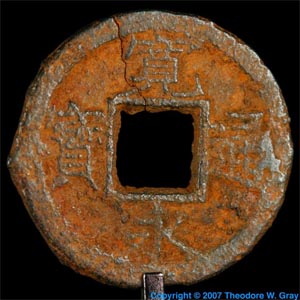I don’t know if you’re sick of the subject by now, but iron fertilization of the oceans is back in the news – this time on CNNmoney.com. This is a good sign, if only because it signals that people with money are beginning to hear that we need to put some major resources into reducing the amount of carbon that’s in the atmosphere (not just reducing the amount that is still going in).
Yes, yes, this is that issue I keep bringing up owing to having recently written a bunch of articles about the subject. (If you want a return to the varied and occasionally witty posts of old, I’m sorry, my brain is fried. Go read the Gist.) But finally it looks like Climos is edging out from the somewhat disreputable shadow of Planktos and getting a bit of attention on its own merits.
The CNN article sums up the appeal of iron fertilization soberly and without fanfare, but in language that might get the attention of investors:
Like other potential solutions to the climate crisis that carry risks – think nuclear power or the idea of burying CO2 in the ground near coal plants – ocean iron fertilization deserves a close look.
In case you haven’t finished reading the five Oceanus articles yet, the CNN piece does a nice job of summarizing them, and offers a link, even going so far as to call them “lively” – a gratuitous adjective that it must be said occasioned a small thrill on the part of Yours Scribbly.
So anyhow, Climos CEO Dan Whaley sounds appropriately level-headed, too:
“This is no silver bullet,” [he said] “It’s not going to fix the problem of climate change. But it’s a significant lever.”
A better way to say it would be “it might be a significant lever if it’s still as promising after we’ve worked out the maze of methods and monitoring obstacles still out there.” But at least it’s more level headed than Planktos sounded last year (NYT):
“This is organic gardening, not rocket science,” said Russ George, the chief executive of Planktos, the company behind the WeatherBird II project. “Can it possibly be as easy as we say it is? We’re about to find out.”
Put it this way: last month, the company fired its CEO, put its ship up for sale, laid off most of its employees, closed its Foster City, Calif., office, started looking into farming trees, and posted this on its website:
The Company’s Board of Directors has decided to abandon any future ocean fertilization efforts that were once intended to restore marine plant life and generate ecological offsets for the global carbon credit market.
(Image: Theodore Gray/periodictable.com)





Is there some reason that they abandoned it so suddenly? Did they do any experimentation that made them realize that it probably wouldn’t work (at least not soon enough)? Or did they happen to sit down and read the Oceanus articles, and that was enough for them?
Yep, sorry, I haven’t given you guys much of the Planktos back story, in part because I was doing real writing that involved them and didn’t want to single them out one way or another. But many people were skeptical of Planktos’s rather grandiose claims and rush to get on with things despite having little more than a boat and some plankton nets (and a hundred tons of iron). I don’t know precisely why they abandoned things – it certainly wouldn’t have been because of the Oceanus articles. I think as the clock ticked down and it got closer to time to steam out and start an unpopular round of dumping, they saw their prospects dwindling. I also wonder if any of their financial backers pulled out.
The whole planktos thing is rather a comedy of errors, in my view. The boat ended up being refused to port where they were supposed to pick up equipment and personnel. It wasn’t clear to me exactly why they were refused port, but I think the official answer was something along the lines of not completing all the necessary permits. They eventually ran out of gas and ran out of money, never able to complete their last mission. Pretty hard fall after being featured in the NY Times with such promise and having the high-flying Richard Branson accompanying their maiden voyage. As you suggest, Climos seems to be grounded more in the reality of iron fertilization science. Its still an enormous challenge to go from the unpredictability of the first experiments to an effective strategy for sinking carbon into the ocean deep.
I just started a blog for the bicycle collective I coordinate, come check it out and you may recognize a familiar face.